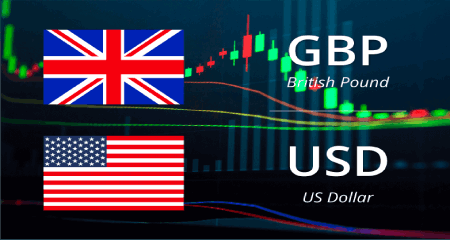
GBP/USD nears 1.2800 amid BoE hawkish signals
GBP/USD rallies sharply in the North American session, propelled by an interest rate hike by the European Central Bank (ECB) and a hold of the US Federal Reserve (Fed). Expectations that the Bank of England (BoE) could be the more hawkish central bank amongst G10 FX countries keep the GBP/USD underpinned toward the 1.2800 mark. At the time of writing, the GBP/USD is trading at 1.2764 after hitting a low of 1.2628. Wall Street is trading with gains following the Fed’s decision to keep rates unchanged. Even though Jerome Powell and Co. telegraphed two more 25 bps rate hikes, the markets are not buying their narrative, as US Treasury bond yields drift lower, with the 10-year note yielding 3.753%, down four basis points (bps), while the greenback weakens across the board.
Regarding economic data, US Retail Sales unexpectedly jumped in May by 0.3% MoM, against estimates for a 0.1% contraction, though it eased a tick compared to April’s data. Regarding the labor market, Initial Jobless Claims for the week ending June 10 rose 262K above the 249K analysts foresee, with back-to-back increases in claims, flashing that the labor market is cooling. In other data, Industrial Production in the US, reported by the Fed, grew 0.2% YoY, though monthly figures showed a contraction of -0.2%. Aside from this, the Philadelphia Fed Manufacturing Index came better than expected but trailed May’s report; while the New York Empire State Manufacturing Index improved unexpectedly, exceeding estimates of -15.1, crushed last month’s reading of -31.8 at 6.6.
Across the pond, money market futures estimates the Bank of England (BoE) would continue to raise rates after solid employment data and April’s GDP figures. WIRP suggests a 25 bps hike in June is fully priced in, as well as August, September, and November, bringing the Bank Rate to 5.75%. Further data will be revealed the next week, with CPI for May expected at 8.5% YoY, compared to April’s 8.7%. Once the GBP/USD conquered 1.2700, that exposed last year’s April 26 high at 1.2772 as the only resistance between the current exchange rate and the 1.28 handle. A breach of the latter will clear the path towards 1.3000, with resistance found at April 25 high at 1.2843 and April 13 low at 1.2972. Conversely, if GBP/USD drops below 1.2700, that would expose the May 10 high at 1.2679 before the major dips toward the 1.2600 figure. Downside risks lie at the 20-day Exponential Moving Average (EMA) at 1.2521, ahead of testing the June 12 low of 1.2487.
Across the pond, money market futures estimates the Bank of England (BoE) would continue to raise rates after solid employment data and April’s GDP figures. WIRP suggests a 25 bps hike in June is fully priced in, as well as August, September, and November, bringing the Bank Rate to 5.75%. Further data will be revealed the next week, with CPI for May expected at 8.5% YoY, compared to April’s 8.7%. Once the GBP/USD conquered 1.2700, that exposed last year’s April 26 high at 1.2772 as the only resistance between the current exchange rate and the 1.28 handle. A breach of the latter will clear the path towards 1.3000, with resistance found at April 25 high at 1.2843 and April 13 low at 1.2972. Conversely, if GBP/USD drops below 1.2700, that would expose the May 10 high at 1.2679 before the major dips toward the 1.2600 figure. Downside risks lie at the 20-day Exponential Moving Average (EMA) at 1.2521, ahead of testing the June 12 low of 1.2487.
